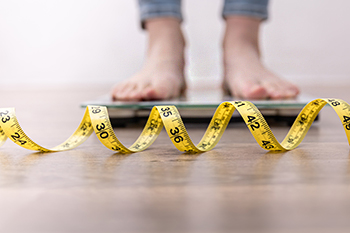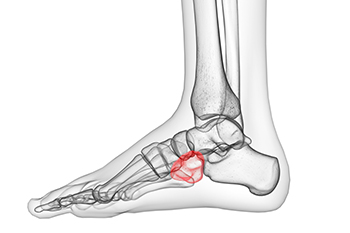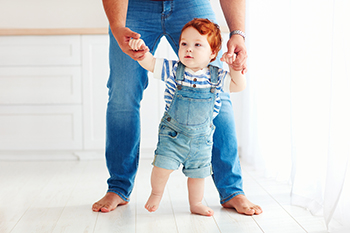3885 S. Decatur Blvd Suite #1080
Las Vegas, NV 89103

Circulation problems are caused in the feet when blood is not able to easily reach the feet. Occasionally, poor circulation in the feet can be a contributing cause to a variety of different afflictions of the foot. Namely, poor circulation can sometimes affect the temperature of the feet. This can lead to a condition known as cold feet. As its name suggests, those living with consistently cold feet feel can feel low temperatures in their lower extremities. Poor circulation can cause this condition as a result of an insufficient amount of warm blood traveling to the feet, and the feet may feel abnormally cold. If you are living with poor circulation in your feet, consider the risk of developing cold feet. Contact a podiatrist to answer any of your questions in addition to learning about various treatment options.
Poor circulation is a serious condition and needs immediate medical attention. If you have any concerns with poor circulation in your feet contact Loren Hansen, DPM of Ankle & Foot Medical Center. Our doctor will treat your foot and ankle needs.
Poor Circulation in the Feet
Poor blood circulation in the feet and legs is can be caused by peripheral artery disease (PAD), which is the result of a buildup of plaque in the arteries.
Plaque buildup or atherosclerosis results from excess calcium and cholesterol in the bloodstream. This can restrict the amount of blood which can flow through the arteries. Poor blood circulation in the feet and legs are sometimes caused by inflammation in the blood vessels, known as vasculitis.
Causes
Lack of oxygen and oxygen from poor blood circulation restricts muscle growth and development. It can also cause:
Those who have diabetes or smoke are at greatest risk for poor circulation, as are those who are over 50. If you have poor circulation in the feet and legs it may be caused by PAD and is important to make changes to your lifestyle in order to reduce risk of getting a heart attack or stroke. Exercise and maintaining a healthy lifestyle will dramatically improve conditions.
As always, see a podiatrist as he or she will assist in finding a regimen that suits you. A podiatrist can also prescribe you any needed medication.
If you have any questions please feel free to contact our office located in Las Vegas, NV . We offer the newest diagnostic and treatment technologies for all your foot and ankle needs.

Being overweight can contribute to the development of foot problems in several ways. Carrying excess weight can negatively affect the structure of your feet, especially in the heels. It also increases the pain and discomfort of arthritis. The more extra weight you carry, the worse any foot ailment becomes. Being overweight can result in overuse foot problems, such as tendonitis, stress fractures, and plantar fasciitis or other heel pain. It is also believed that excess weight increases your chances of developing high cholesterol, poor circulation, and diabetes. These conditions can have a direct result on damage to your feet. The main ways to reduce the effects of obesity is to become more physically active, find an eating plan that allows you to lose weight gradually, and make some lifestyle changes regarding food habits. If you have foot pain that is a direct result of excessive body weight, it is a good idea to consult a podiatrist who can examine your feet and ankles and offer appropriate treatment options.
The more you weigh, the harder your feet must work to support your body. If you’re an obese individual and are concerned about your feet, contact Loren Hansen, DPM from Ankle & Foot Medical Center. Our doctor can provide the care you need to keep you pain-free and on your feet.
Obesity and Your Feet
People who are overweight are putting more pressure on their ankles, knees, and hips as well as their feet. This unfortunately can lead to variety of different issues.
Problems & Complications Stemming from Obesity
If you have any questions, please feel free to contact our office located in Las Vegas, NV . We offer the newest diagnostic and treatment technologies for all your foot care needs.

Cuboid syndrome is a lesser-known affliction of the foot among the general public. Primarily affecting the cuboid bone at the deep plantar area of the foot, cuboid syndrome occurs when the cuboid bone moves out of alignment. A medical professional may recommend any number of different techniques to treat cuboid syndrome. Taping is one such technique that might be used to treat the condition or mitigate its effects. Taping can be performed by a medical professional trained in foot health such as a podiatrist. A podiatrist performs this by essentially wrapping the foot in medical tape. Specifically, the podiatrist can secure tape on the bottom of the foot by the cuboid bone and wrap the tape around the top of the foot to the ankle. If you believe that you might have cuboid syndrome, contact a podiatrist today.
Cuboid syndrome, also known as cuboid subluxation, occurs when the joints and ligaments near the cuboid bone in the foot become torn. If you have cuboid syndrome, consult with Loren Hansen, DPM from Ankle & Foot Medical Center. Our doctor will assess your condition and provide you with quality foot and ankle treatment.
Cuboid syndrome is a common cause of lateral foot pain, which is pain on the outside of the foot. The condition may happen suddenly due to an ankle sprain, or it may develop slowly overtime from repetitive tension through the bone and surrounding structures.
Causes
The most common causes of cuboid syndrome include:
Symptoms
A common symptom of cuboid syndrome is pain along the outside of the foot which can be felt in the ankle and toes. This pain may create walking difficulties and may cause those with the condition to walk with a limp.
Diagnosis
Diagnosis of cuboid syndrome is often difficult, and it is often misdiagnosed. X-rays, MRIs and CT scans often fail to properly show the cuboid subluxation. Although there isn’t a specific test used to diagnose cuboid syndrome, your podiatrist will usually check if pain is felt while pressing firmly on the cuboid bone of your foot.
Treatment
Just as the range of causes varies widely, so do treatments. Some more common treatments are ice therapy, rest, exercise, taping, and orthotics.
If you have any questions, please feel free to contact our office located in Las Vegas, NV . We offer the newest diagnostic and treatment technologies for all your foot care needs.

Babies' feet grow rapidly in their early years. An infant’s foot has 22 bones, and the remaining bones will form by the time the child reaches age five. Prior to this, babies’ feet are made of soft cartilage, and it is important that their first shoe is made of pliable materials. It is beneficial to have your child crawl and walk barefoot while indoors, and this is beneficial in keeping the foot strong. When your child is two years old, they will have a distinctive foot shape, either tapered, square, or round. These shapes are easy to notice, as the toes will be in a square formation when they are all the same length. Many patients’ second or third toe is the longest, and this is characteristic of the rounded shape. When the biggest toe is the longest, this generally falls into the tapered shape category. There are many things to know about children’s foot health, and if you would like additional information, please consult with a podiatrist.
The health of a child’s feet is vital to their overall well-being. If you have any questions regarding foot health, contact Loren Hansen, DPM of Ankle & Foot Medical Center. Our doctor can provide the care you need to keep you pain-free and on your feet.
Tips for Keeping Children's Feet Healthy
If you have any questions, please feel free to contact our office located in Las Vegas, NV . We offer the newest diagnostic and treatment technologies for all your foot care needs.

The biomechanics of the feet are outstandingly complex, as more than 25 bones and 30 joints are located in the human feet. Each bone, ligament, muscle, and joint serves an important function to keep the feet functioning correctly and engaged in normal motion. The joints, in particular, are indispensable to the human foot. It is important to note that the joints essentially make jumping, walking, and motion generally possible. Some of the most important joints in the feet include the ankle joint, the tarsometatarsal joint, and the Interphalangeal joint. Joints are formed at the intersection point of two bones (i.e. where two bones come together in the foot). Joints are primarily engaged in facilitating movement between the bones, which makes their role so critical in the feet. Since joints play such an important role in the feet, injuries to ankle joints can be serious and motion-inhibiting. For example, a common injury of this type is known as an ankle sprain, which targets the ankle joint, tearing the relevant ligaments. If you are interested in learning more about the important joints of the human foot, contact a podiatrist today for more information.
If you have any concerns about your feet, contact Loren Hansen, DPM from Ankle & Foot Medical Center. Our doctor can provide the care you need to keep you pain-free and on your feet.
Biomechanics in Podiatry
Podiatric biomechanics is a particular sector of specialty podiatry with licensed practitioners who are trained to diagnose and treat conditions affecting the foot, ankle and lower leg. Biomechanics deals with the forces that act against the body, causing an interference with the biological structures. It focuses on the movement of the ankle, the foot and the forces that interact with them.
A History of Biomechanics
Modern technological improvements are based on past theories and therapeutic processes that provide a better understanding of podiatric concepts for biomechanics. Computers can provide accurate information about the forces and patterns of the feet and lower legs.
Understanding biomechanics of the feet can help improve and eliminate pain, stopping further stress to the foot.
If you have any questions please feel free to contact our office located in Las Vegas, NV . We offer the newest diagnostic and treatment technologies for all your foot and ankle needs.